Can outdoor recreators minimize impact in the backcountry while connecting deeply with place?
By Sam Sharp
It’d been raining all day when we heard them: bullfrogs, croaking from the woods. We stopped, dropped our packs, and marched through the leaf litter to find them.
One student pointed out a big, green frog covered in mud.
“Can I hold him?” he asked.
Sure, I wanted to say. Just be gentle. But I hesitated. The frog had stopped croaking by now, frozen under the stare of ten 8th graders. In fact, all the frogs had stopped. We’d walked as carefully as we could, but our footsteps had still reduced their miniature pond to a silent puddle of mud.
“Let’s just look for now,” I finally said. “We don’t want to bother him.”
The student sighed. “Okay,” he said.
That night, after we set up our camp, I overheard him talking with a friend. This was the first frog he’d seen “in real life.”
That moment stuck with me. As an outdoor educator, I’d led these students into the backcountry—ten days in the Appalachian Mountains—to foster relationships with themselves, each other, and nature. At the same time, we tried to minimize our impact on this place. Most outdoor professionals would agree that holding wild animals, especially walking off trail to do so, violates that effort. It goes against Leave No Trace, or LNT—the ethical guidelines most outdoor recreators follow to reduce our impact on the backcountry.
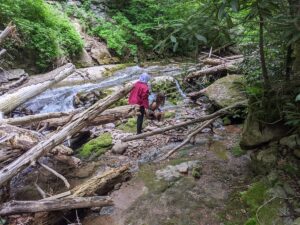
And yet, something about LNT just didn’t feel right. There were times that, as with the frog, trying to minimize our impact resulted in minimizing engagement. But it wasn’t just missed opportunities. Sometimes it felt like we practiced Leave No Trace merely to create an illusion that we hadn’t been there. For some kids, this illusion of absence is a reality. Many of our students came from backgrounds that have been and still are excluded from outdoor spaces. It disturbed me to tell them to make our camps look like they were never there—to scatter rocks we used to tie down tarps, for example—when, just a week before, they had never been.
I left that job with a lot of questions. I could see how following Leave No Trace helped us clean up after ourselves and protect the wild quality of these mountains. But I worried that framing their whole relationship with nature around LNT might compromise students’ connection to them. At a time when access to wildlands is out-of-reach for many young people, could we adapt LNT to not just minimize our impact on nature, but also maximize meaningful experiences with it?
![]()
In the 1970s, Americans began flocking to national parks and forests in unprecedented numbers. Remote places suddenly faced a new source of pressure: aggressive, reckless recreation. Hillsides eroded as hikers walked off trail. People fed bears, then got attacked by them. Campgrounds became clogged with hot-dog wrappers, charcoal, and human poop. And unattended campfires often leapt into the forest.
People’s behavior began to shift, slowly, in the 1980s, when the National Park Service, Forest Service, and Bureau of Land Management cooperatively established a program called “Leave No Trace” to inform responsible backcountry travel.
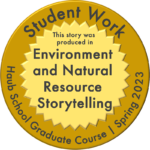 Leave No Trace has since become a non-profit organization, offering day programs, workshops, and multi-day “LNT Master Educator” certification courses. It has become the ethical underpinning of the most outdoor education groups and is the most widespread outdoor ethic in the United States. You can find its seven principles displayed at most trailheads, outdoor retailers, and National Park visitor centers. The principles are:
Leave No Trace has since become a non-profit organization, offering day programs, workshops, and multi-day “LNT Master Educator” certification courses. It has become the ethical underpinning of the most outdoor education groups and is the most widespread outdoor ethic in the United States. You can find its seven principles displayed at most trailheads, outdoor retailers, and National Park visitor centers. The principles are:
- Respect wildlife
- Travel and camp on durable surfaces
- Dispose of waste properly
- Plan ahead and prepare
- Leave what you find
- Minimize campfire impacts
- Be considerate of other visitors
Leave No Trace is simple and actionable. Pack out your trash, it tells us. Stay on trail to reduce erosion. Let animals be. And cook on a propane stove, not a campfire, to limit burn scars and wildfires.
“All the principles are science driven,” says Derrik Taff, an associate professor of Outdoor Recreation at Penn State. He was on sabbatical at LNT’s headquarters in Boulder when we talked over the phone.
“I’ve seen them work firsthand, as a park ranger and outdoor facilitator,” he continued, “but they’ve been empirically shown as well.”
He described a study showing that LNT training led a group of kids to act with more consideration for nature.
I asked him how following LNT as an ethic, however helpful it might be in reducing our impact, might lead to a detached relationship with the outdoors. He saw that as a misteaching of the principles.
“It’s really just about being a good human… Like, let’s try to protect nature and be respectful of each other. Who could argue with that?”
![]()
I couldn’t argue with Taff on the point of whether or not LNT works. But I still felt like there was something off about it—something wrong with using it to drive our relationship with the environment. David Moskowitz, author and professional wildlife tracker, put this feeling into words.
“It [LNT] forwards the idea of wilderness,” he told me over the phone one day. “It erases the reality that North America wasn’t a wilderness, it was inhabited by people that we stole the land from.”
His criticism is not isolated. In a paper titled, “Beyond Leave No Trace,” researchers from Stanford University and the University of California, Santa Barbara argue that “as a practical environmental ethic, Leave No Trace disguises much about human relationships with non-human nature.” It promotes an optimal relationship to nature based on human absence, another researcher argues, further alienating people from wild places.
“I had students who were so afraid to mess things up outside that it just became a stressful experience,” Moskowitz continued. “As if, you know, as if we were in a museum.”
He cleared his throat. “When it comes down to it, LNT is really about making it more aesthetically pleasing for affluent people to recreate.”
Moskowitz’ criticism of LNT resonated with me. It felt arbitrary to tell students not to flip rocks upside down when looking for crawdads, for example, when a flood might easily do the same thing. But again, Taff’s support for it made sense too. I’d chased off many racoons who’d come to scrounge on dinner scraps we hadn’t properly disposed of.
I wondered if there was a middle way—if I could find someone who has adapted LNT to inform a more holistic, complex outdoor ethic.
![]()
I immediately thought of KROKA Expeditions, which I’d heard about when I was working for Outward Bound. Based on an organic farm in New Hampshire, KROKA embraces a unique blend of organic agriculture and backcountry travel in its curriculum. I reached out to Emily Sherwood, a co-director at KROKA, to learn more.
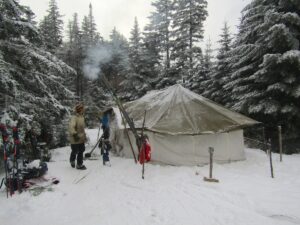
Sherwood made it clear that KROKA rigorously follows LNT. But it doesn’t seem to minimize intimate experiences with nature. On some courses, students build canoes from dead trees they fell, using hatchets they maintain. Sherwood also noted that they have a unique way of travelling in winter.
“Our winter travel is very intensive,” she started. “We use a large tent that can fit all of our group, and a wood stove that can heat the tent…And we’re really conscious about how we harvest those [tree limbs]… and how many we take from a single tree.”
KROKA students also cook almost exclusively with wood because it’s so abundant in the northeast. Campfires also foster more intimate experiences with a place and other people than gas, from carefully harvesting wood in the area as a group, to seeing the flames crackle while it cooks your dinner. Still, it’s still a surprising decision, given that propane stoves are widely considered to create less visual impact.
“It feels like Leave No Trace on a much more global scale,” she said. “We’re not using a petroleum product. And that feels like the right thing.”
We agreed that LNT looks different in different places. Here on the high plains of Wyoming, I rarely, if ever, make a fire (though I have in winter, when enough snow falls in the mountains to make a fire pit). But I’ve only been living in Wyoming for little more than a year. I wondered how I could continue framing LNT in my own budding relationship with this place.
Perhaps Moskowitz, a former KROKA instructor himself, said it best. “Let’s accept that negative impacts exist and that we need to clean up after ourselves. But we can reimagine Leave No Trace as something that is helpful in terms of keeping a clean campsite, but also realistic about our relationship with the natural world.”
This can still sound cerebral to me. But responsible recreation might not be as complicated as it seems.
![]()
On Day 5 of another expedition, we came upon Crater Lake in Pennsylvania’s Delaware Water Gap. It was 90 degrees out, clear and sunny. The students wanted to swim. I wanted to tell them no: this is a fragile, and highly trafficked, glacial lake. But I talked it over with my co-instructor, and we made a plan.
We scouted out a spot without much vegetation on the edge of the lake, and the next thing I knew all ten students were in the water, shoes off, howling like coyotes.
Later that afternoon, we air-dried, put on our hiking boots, and prepared to continue on our way. Our impact on the water seemed negligible—perhaps a bit of sunscreen in an already well traveled lake. But the water’s impact on us was momentous.
“I needed that,” one student said, closing his eyes. “And I didn’t even know that I did.”
Sam Sharp is a writer from Ohio. A former Outward Bound instructor, he is currently pursuing an MFA in Creative Nonfiction Writing with a concurrent degree in Environment and Natural Resources at the University of Wyoming.
Header image: Students form a huddle and chant in Crater Lake. (Photo courtesy Philadelphia Outward Bound School.)

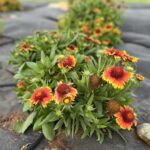
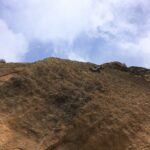
That was a fantastic read!
Sounds like this was written by an eighteen year old kid who got in his feelings about not letting kids hold frogs when they obviously shouldn’t have held the frogs. Some real critical thinking going on here.